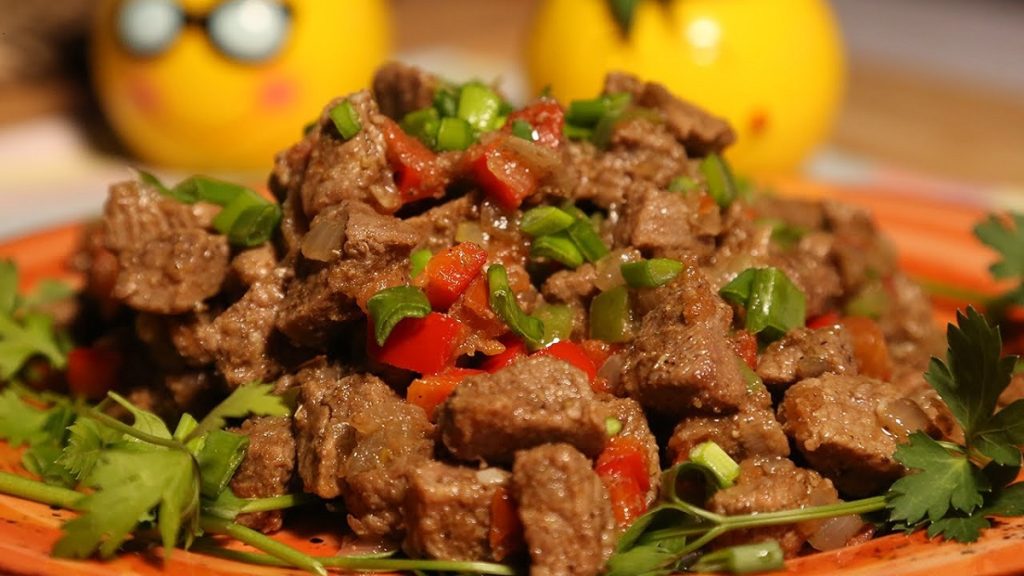Mugalgal (also spelled mqlql or maqlaqal) is a beloved meat dish featuring tender lamb or beef pieces sautéed with onions, spices, and sometimes tomatoes, cooked quickly over high heat. It is particularly well known in Saudi Arabia’s Hejaz region, including cities like Mecca, Jeddah, and Taif, where it is served as a hearty breakfast or lunch, often with tamees (clay oven bread).
But because of its simplicity, regional accessibility, and proximity between Saudi Arabia and Yemen, the dish has also been adopted in parts of Yemen, especially in the northwestern highlands, where similar ingredients are common.
So, is it Saudi or Yemeni? While both countries enjoy versions of mugalgal, the dish is historically and culturally rooted in Saudi Arabia, especially in Hejazi cuisine.
1. Origins of Mugalgal: A Hejazi Invention
The term mugalgal in Arabic literally means “shaken” or “tossed,” describing the way meat is quickly stirred or tossed in a hot pan with onions and spices. The dish developed as:
-
A quick-cook meat meal for Bedouins, traders, and city dwellers alike
-
A way to maximize flavor using minimal ingredients
-
A dish that showcases Saudi olive oil or ghee, red onions, cumin, black pepper, and fresh meat
Historians and Saudi culinary experts generally agree that mugalgal originated in the Hejaz, where trade and pilgrimage routes brought spices and cooking techniques from across the Muslim world. It became a staple not just for locals, but also for travelers and merchants, prized for its rich taste and ease of preparation.
2. Mugalgal in Yemen: Cultural Crossroads
Due to centuries of cultural exchange between Saudi Arabia and Yemen, many dishes overlap or have variants. In Yemen, particularly in regions like Sa’dah, Hajjah, and parts of Taiz, a similar dish is prepared:
-
Yemeni mugalgal may include garlic, green chili, turmeric, and fenugreek
-
It is sometimes cooked more slowly with slightly more liquid
-
Accompanied by reshoosh or khobz tawa, traditional Yemeni breads
While Yemenis enjoy mugalgal-like dishes, they often differ in spice profile and presentation, reflecting local agricultural and cultural preferences.
3. Distinguishing Saudi vs. Yemeni Mugalgal
| Feature | Saudi Hejazi Mugalgal | Yemeni-Style Mugalgal |
|---|---|---|
| Primary Region | Hejaz (Mecca, Jeddah, Taif) | Northwestern Yemen |
| Cooking Style | Fast stir-fry on open flame | May include simmering or braising |
| Common Ingredients | Lamb/beef, onion, tomato, cumin | Meat, chili, garlic, fenugreek |
| Bread Pairing | Tamees or white rice | Reshoosh or tanoor bread |
| Origin | Saudi Arabia (historically confirmed) | Adopted and adapted in Yemen |
4. Popularity Today and Modern Interpretations
Today, mugalgal is not only a traditional favorite but also a staple in Saudi restaurants and home kitchens, especially for weekend breakfasts or festive gatherings. It’s often one of the first dishes young men in Saudi Arabia learn to cook due to its simplicity and bold flavor.
In Yemen, similar stir-fried meat dishes are also being revived in local restaurants and diaspora communities, often labeled as “Yemeni meat fry” or “meat with fenugreek.”
Food bloggers and chefs across the Gulf now share fusion versions of mugalgal using:
-
Chicken or even camel meat
-
Fresh herbs like coriander
-
Side sauces like laban (yogurt) or tahini dip
A Shared Culinary Heritage with Saudi Roots
While both Saudis and Yemenis enjoy mugalgal, the dish’s documented origin lies in the Hejazi region of Saudi Arabia. Its spread into Yemen reflects the deep historical, religious, and cultural ties between the two nations. Mugalgal is a perfect example of how food transcends borders—rooted in one place, but beloved by many.
Whether you eat it with tamees in Jeddah or khobz in Sana’a, mugalgal remains a satisfying, soul-warming dish that captures the essence of Arabian cooking.

